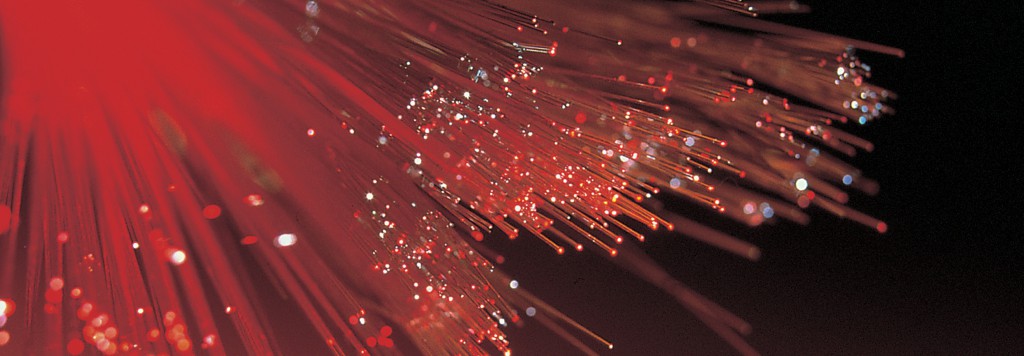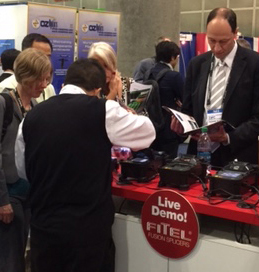Supporting the Nation’s “Most Wired and Connected” State
Comments Off on Supporting the Nation’s “Most Wired and Connected” State
The employees of OFS recently reflected on our role in successfully deploying a massive network that makes Maryland the most “wired and connected” state in the nation 2015.
In this project, nine Maryland governmental jurisdictions joined forces to form The One Maryland Inter-County Broadband Network (ICBN). ICBN then partnered with the State of Maryland to achieve the goal of providing affordable and accessible high-speed broadband access to community institutions, businesses and residents across the state. (more…)
Taking Multimode Fiber into the Future
Leave a CommentOFS recently showcased technology developments in multimode fiber transmission a t OFC 2015. Our live demonstrations showcased future advances in short-reach data center interconnects and “illustrated a paradigm shift in how multimode transceivers are standardized,” according to Systems & Technology Strategy Director Robert Lingle.
t OFC 2015. Our live demonstrations showcased future advances in short-reach data center interconnects and “illustrated a paradigm shift in how multimode transceivers are standardized,” according to Systems & Technology Strategy Director Robert Lingle.
Looking forward, the most far-reaching impact will come from the trend of applying Wavelength-Division Multiplexing (WDM) to the multimode space with more than one wavelength per fiber. In fact, a new standard for wideband multimode fiber that supports four WDM wavelengths is now in process with the Telecommunications Industry Association (TIA), endorsed by the fiber, structured cabling and transceiver communities. (more…)
Considering Next-Generation Outside Plant Optical Fibers
Leave a Comment Over time, the design of outside plant (OSP) single-mode optical fibers has evolved. Originally, these fibers operated only in the 1310 nm and 1550 nm wavelengths. Then, in the 1990’s, single-mode fibers migrated to full-spectrum performance. Today, end users value fibers that offer improved macrobend performance, backward compatibility and low attenuation.
Over time, the design of outside plant (OSP) single-mode optical fibers has evolved. Originally, these fibers operated only in the 1310 nm and 1550 nm wavelengths. Then, in the 1990’s, single-mode fibers migrated to full-spectrum performance. Today, end users value fibers that offer improved macrobend performance, backward compatibility and low attenuation.
As OSP single-mode fibers continue to change, Technical Manager Dave Mazzarese believes there are five key things you should know about the performance and reliability of these fibers. To learn more and access Dave’s complete analysis, please go here.

